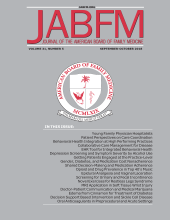Abstract
Background: Underserved patient populations experience barriers to accessing and engaging within the complex health care system. Electronic patient portals have been proposed as a potential new way to improve access and engagement. We studied patient portal use for 12 consecutive months (365 days) among a large, nationally distributed, underserved patient population within the OCHIN (originally created as the Oregon Community Health Information Network and renamed OCHIN as other states joined) practice-based research network (PBRN).
Methods: We retrospectively assessed adoption and use of Epic's MyChart patient portal in the first 12 months after MyChart was made available to the OCHIN PBRN. We examined electronic health record data from 36,549 patients aged ≥18 years who were offered a MyChart access code between May 1, 2012, and April 30, 2013, across the OCHIN PBRN in 13 states.
Results: Overall, 29% of patients offered an access code logged into their MyChart account. Superusers (minimum of 2 logins per month over a 12-month period) accounted for 6% of users overall. Men, nonwhite patients, Hispanic patients, Spanish-speaking patients, and those with the lowest incomes were significantly less likely to activate. Publicly insured and uninsured patients were also less likely to log in to their MyChart account, but once activated they were more likely than privately insured patients to use MyChart functions.
Conclusions: Our findings suggest that, compared with others, certain patient groups may be less interested in using patient portals or may have experienced significant barriers that prevented use. Making portal access available is a first step. Additional studies need to specifically identify health system–, clinic-, and patient-level barriers and facilitators to portal adoption and use.







